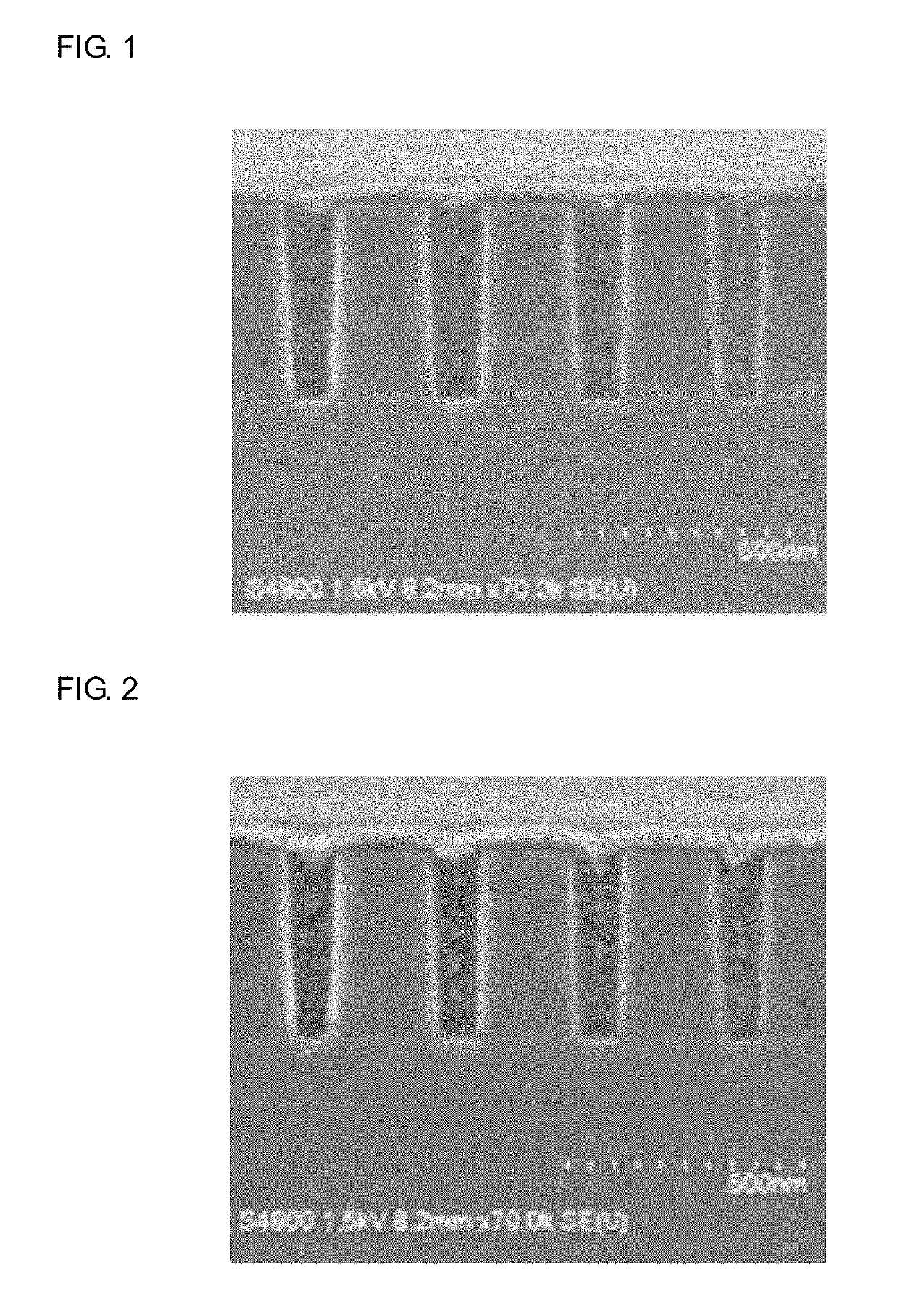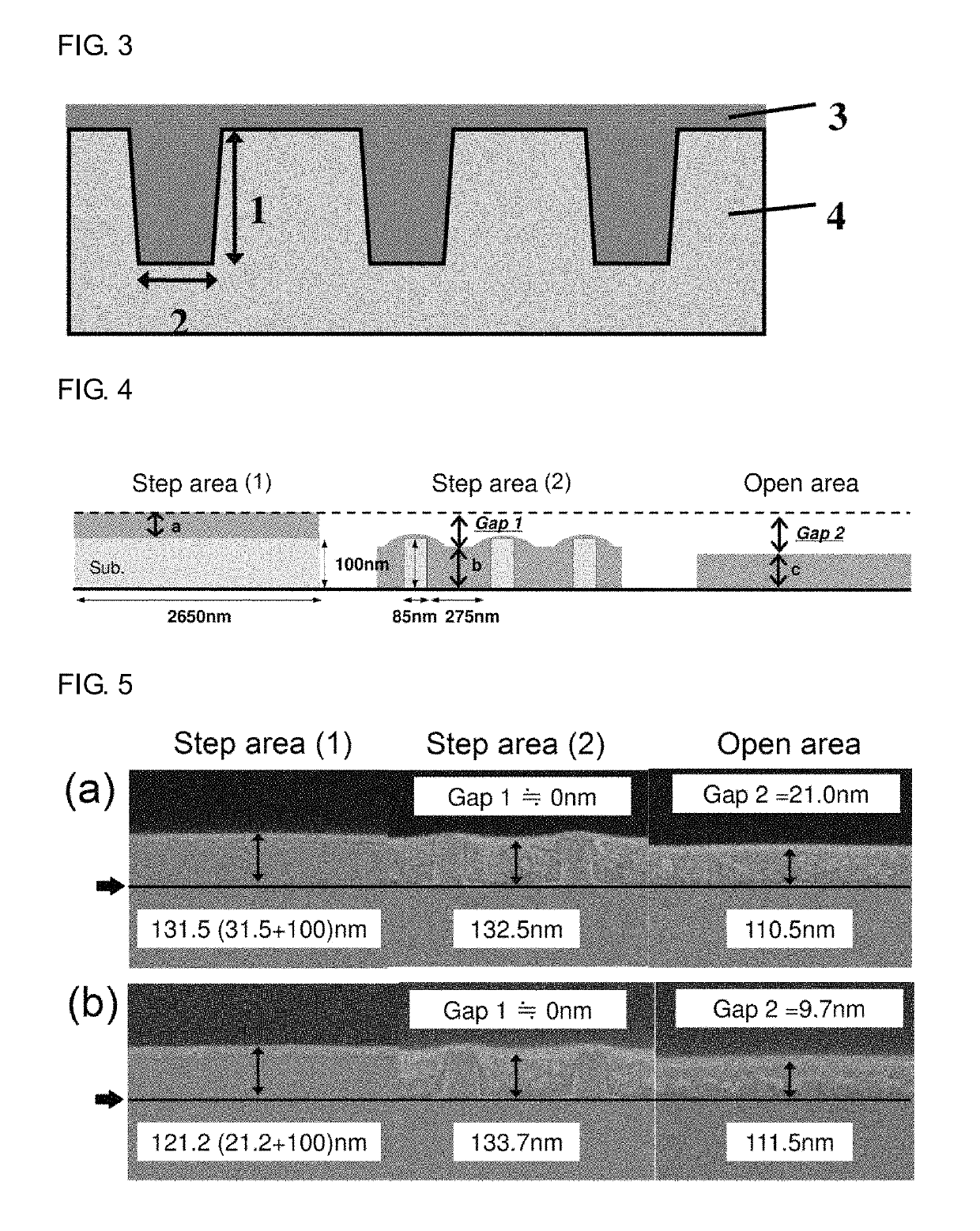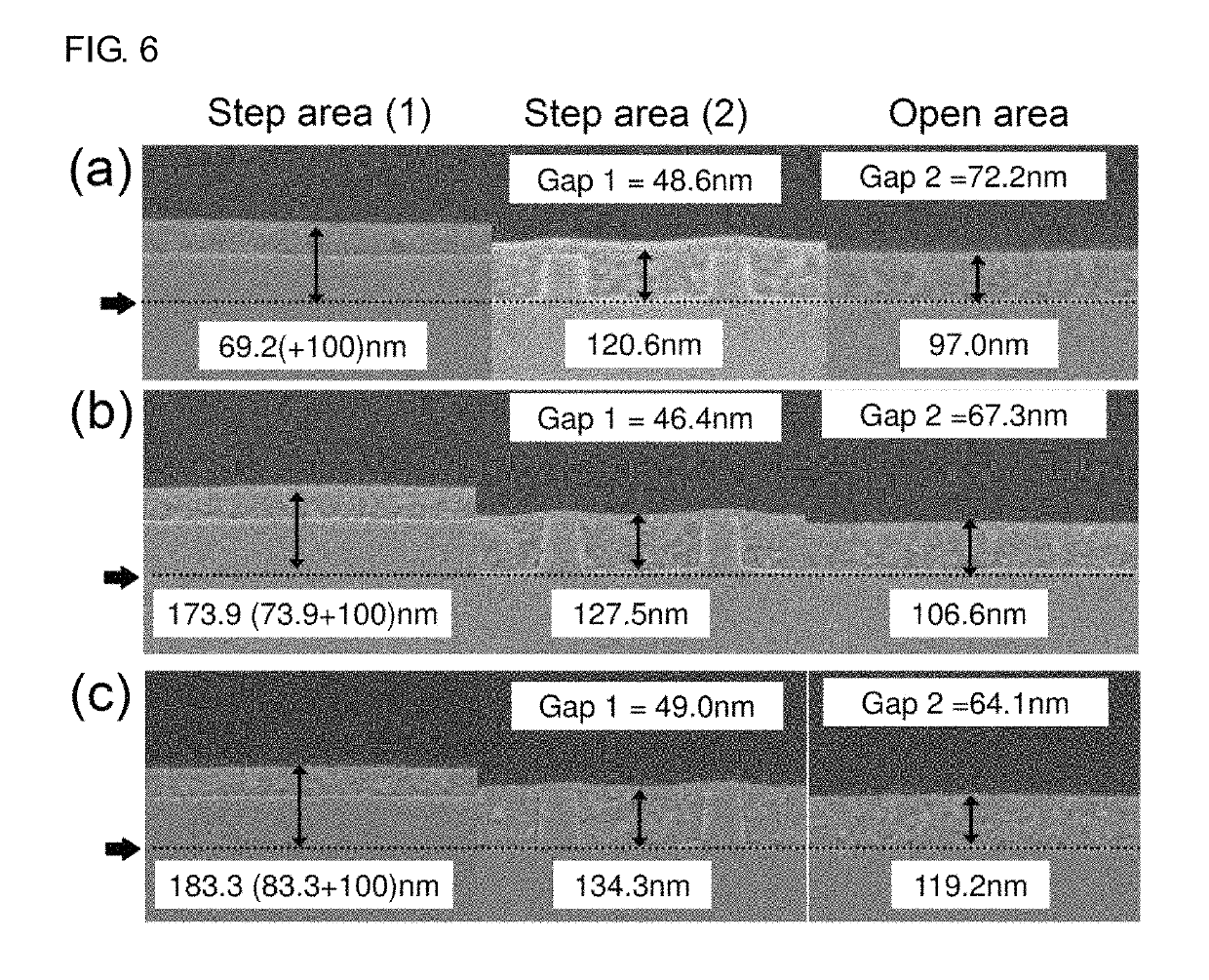Cationically polymerizable resist underlayer film-forming composition
a technology of polymerizable resist and composition, which is applied in the field of lithographic cationically polymerizable resist underlayer film-forming composition, can solve the problems of resolution failure, resist pattern having a desired shape cannot be formed, and resist pattern dimension variation, so as to achieve high filling properties of the inside of the hole, reduce the viscosity, and improve the effect of etching ra
- Summary
- Abstract
- Description
- Claims
- Application Information
AI Technical Summary
Benefits of technology
Problems solved by technology
Method used
Image
Examples
synthesis example 1
[0116]A solution obtained by mixing 100.18 g (30% by mass PGMEA solution) of tetra(3,4-epoxycyclohexylmethyl)butanetetracarboxylate modified ε-caprolactone (product name EPOLEAD GT401 available from Daicel Corporation), 3.1287 g of 9-anthracenecarboxylic acid, 0.0807 g of benzyl tetraethylammonium chloride, and 7.6687 g of propylene glycol monomethyl ether acetate (PGMEA) was warmed to 140° C., and reacted under a nitrogen atmosphere for 24 hours, to obtain a solution containing a compound of the following Formula (A-1) (solid content: 23.3% by mass). The obtained solution containing the compound was analyzed by GPC. The weight average molecular weight in terms of standard polystyrene was about 1,100.
[0117]
synthesis example 2
[0118]A solution obtained by mixing 50.00 g (30% by mass PGMEA solution) of tetra(3,4-epoxycyclohexylmethyl)butanetetracarboxylate modified ε-caprolactone (product name EPOLEAD GT401 available from Daicel Corporation), 3.6028 g of 9-anthracenecarboxylic acid, 0.0915 g of benzyl tetraethylammonium chloride, and 8.6164 g of PGMEA was warmed to 140° C., and reacted under a nitrogen atmosphere for 24 hours, to obtain a solution containing compounds of the following Formulae (A-1) to (A-3) (solid content: 26.2% by mass). The obtained solution containing the compounds was analyzed by GPC. The weight average molecular weight in terms of standard polystyrene was about 1,200.
[0119]
synthesis example 3
[0120]3.00 g of glycidyl methacrylate, 26.213 g of 2-hydroxypropyl methacrylate, and 1.753 g of dimethyl 2,2-azobisisobutylate were dissolved in 30.966 g of propylene glycol monomethyl ether, and the mixture was heated. The mixture was added to 77.416 g of propylene glycol monomethyl ether of which the temperature was kept to 90° C. by heating, to cause a reaction for 24 hours. As a result, a solution of copolymer of glycidyl methacrylate with 2-hydroxypropyl methacrylate was obtained.
[0121]To 120.00 g of the solution containing 24.00 g of this copolymer, 1.70 g of 9-anthracenecarboxylic acid, 0.046 g of benzyltriethylammonium chloride, and 0.4971 g of propylene glycol monomethyl ether were added, and the mixture was heated to cause a reaction at 120° C. for 24 hours. As a result, a solution containing a copolymer having a structural unit of the following Formula (9) was obtained. The obtained copolymer was analyzed by GPC. The weight average molecular weight in terms of standard po...
PUM
| Property | Measurement | Unit |
|---|---|---|
| pore diameter | aaaaa | aaaaa |
| temperature | aaaaa | aaaaa |
| temperature | aaaaa | aaaaa |
Abstract
Description
Claims
Application Information
 Login to View More
Login to View More - R&D
- Intellectual Property
- Life Sciences
- Materials
- Tech Scout
- Unparalleled Data Quality
- Higher Quality Content
- 60% Fewer Hallucinations
Browse by: Latest US Patents, China's latest patents, Technical Efficacy Thesaurus, Application Domain, Technology Topic, Popular Technical Reports.
© 2025 PatSnap. All rights reserved.Legal|Privacy policy|Modern Slavery Act Transparency Statement|Sitemap|About US| Contact US: help@patsnap.com



